What Disney World Park Is the Biggest
All The Disney Parks In The World Ranked
We've been fortunate to be able to make visits to each and every Disney theme park in the world. Over the course of those visits, and for countless hours in between, we discussed and debated how we'd rank the different parks. In this post, we set out to rank the 12 Disney Theme Parks Around The World.
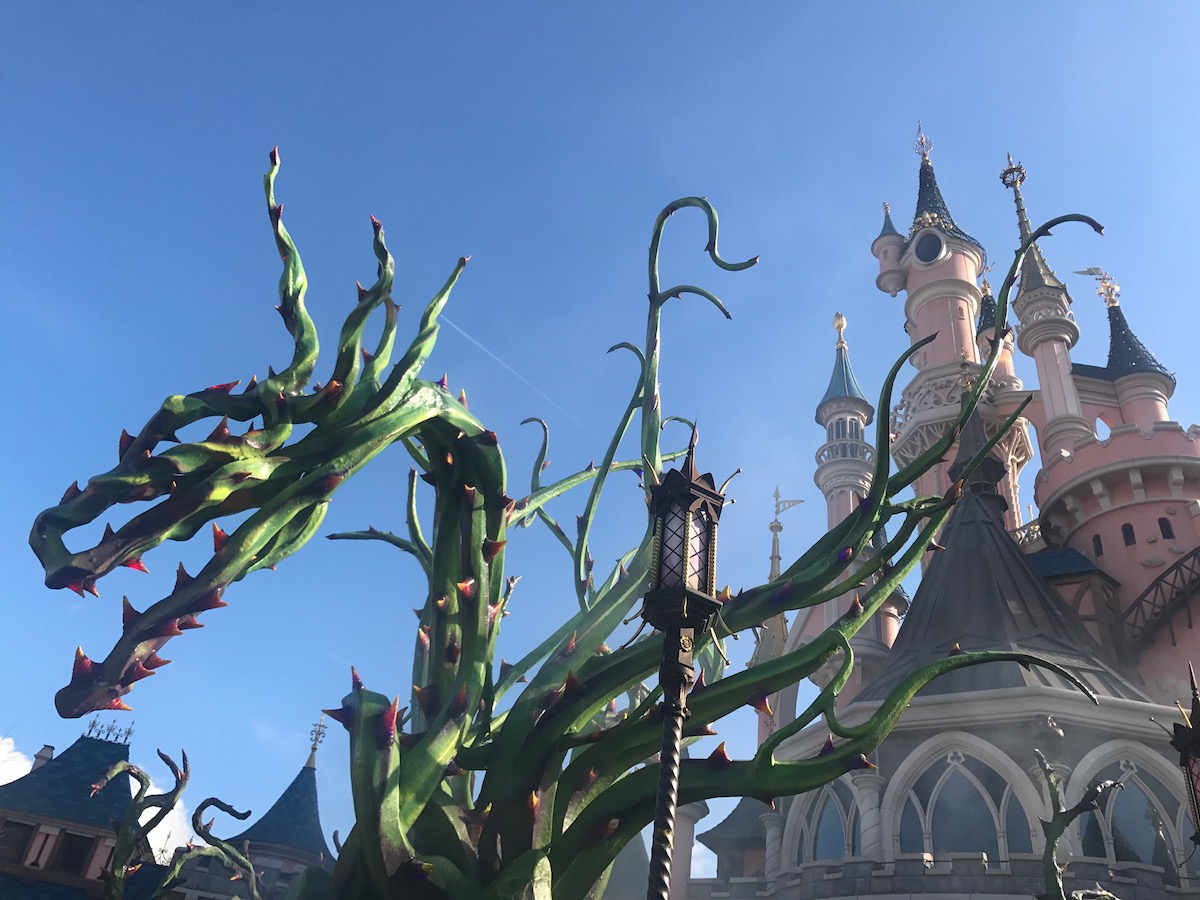
NOTE: WE CAN'T WAIT TO GET BACK!
It's been an interesting couple of years here. We would have liked to have gotten back to the international resorts in 2020 or 2021, but that's been challenging for the obvious reasons and the less obvious (most readers of this post probably don't know, or care, that we had a baby in late 2020).
So, it's been a while since we've been to any international Disney park, and some of these are coming up on a half-decade since our last visit. Time flies when you're covering a new tweak at Disney World every 6 weeks with your life seeing two life-altering disruptions in the middle, I suppose.
We're planning to get back to Disneyland Paris in 2022, with plans to visit the Asian resorts in late 2022 / 2023. Obviously these plans are aspirational, but Zoe already has one international trip done (one post from that trip is up on our sister site), so we fully expect more on the horizon.
All that said, we obviously lack some subjective expertise in these parks. We could leave this post in an old form, but then it's full of inaccurate information. We could update just the parks we've visited recently, but that's maybe even worse. So instead we're going to do our best with the past experience we have and the wonders of the internet, which enable us to learn a lot about changes we haven't seen yet.
Basics about the Disney parks Around The World
If you'd like to cut straight to the rankings, click here. Otherwise, let's start by getting some basic questions answered.
How many Disney parks are there in the world?
There are twelve Disney parks in the world across six different resorts. Walt Disney World also has two water parks—Typhoon Lagoon and Blizzard Beach—but we aren't counting those in this post.
How many Disneylands are there Around The World?
There are Six Disneylands—that is, "castle parks"—around the world—in California, Florida, Paris, Tokyo, Shanghai, and Hong Kong. Each Disney resort has one "Disneyland" or "castle park" and four resorts have other parks as well.
How Many Disneylands Are There In the US?
There are two castle parks in the US—in California and Florida. Disneyland Resort in California has one castle park (Disneyland) and one other park (Disney California Adventure). Walt Disney World Resort in Florida has one castle park (Magic Kingdom) and three other parks (Animal Kingdom, Epcot, and Hollywood Studios).
Where are All the Disneylands and Theme Parks located?
There are six Disney resorts in California, Florida, Tokyo, Paris, Hong Kong, and China with a total of twelve parks. They are:
-
Walt Disney World Resort (Florida) (Magic Kingdom, Hollywood Studios, Epcot, Animal Kingdom)
-
Disneyland Resort (California) (Disneyland, California Adventure)
-
Tokyo Disney Resort (Tokyo Disneyland, Tokyo DisneySea)
-
Disneyland Paris (Disneyland Paris, Walt Disney Studios Park)
-
Hong Kong Disneyland Resort (Hong Kong Disneyland)
-
Shanghai Disney Resort (Shanghai Disneyland)
This post contains a ranking of the individual parks, not the resorts. Thus, there's no discussion of hotel count and quality, transportation around the resort, dining options outside the parks, or anything else beyond the individual parks.
Again, if you'd like to cut straight to the rankings, click here. If you stick with us until then, though, you'll learn in our opening to this post how we think about theme parks and get some important background about what went into our rankings—but it's going to be a long ride.
Challenges To Ranking the Disney Parks
There are some real challenges to the task of ranking the Disney parks. First, it's not like we went from one to another day after day. There were months between some visits and days between others.

Second, we had a limited time at each park. While we always err on the side of overstaying, there's no doubt it takes time to truly appreciate a good theme park. We don't claim to be experts about every park.
Relatedly, we have vastly more experience at Walt Disney World and Disneyland than the other resorts. This helps some parks there that take time to really understand, while it hurts others that suffer from fatigue easily.
Finally—and what this post is really about—there is just the question of what makes a good theme park. It should go without saying that this list is subjective. But we've also tried to think it through and come up with some sort of support for our positions. Any good subjective ranking should maintain some consistency in the factors it's considering.
When you get down to the actual rankings, you'll maybe think it reads somewhat like a list we threw together like any other clickbait list (we really hope not). But that's because we didn't want to devote hundreds of words to each park, and it would be incredibly boring for people who just care about the list to have to hear us go on about the same things over and over.
Before we get to the rankings, you'll get the "behind the scenes" look into how we actually built the list. Hopefully that lends support to the final list we came up with. But if you think we got something wrong, either in our choice of factors or how we applied them, feel free to sound off in the comments!

FACTORS IN RANKING THE DISNEY PARKS
These are the factors we're using in building this list. They're a mix of subjective / objective (but really, almost everything in this is subjective). Our feelings on these have evolved over the years, so much so that I'd say the rankings definitely differ from how, say, 25-year old us would rank the parks (even in their current state).
Attraction Lineup And Quality
Besides theme, attraction lineup is probably the most important factor in comparing theme parks. When we think about attraction lineups, we're thinking how you'd compare these parks if you just ripped out the attractions, lined them up one after another, and rode/experienced them independent of the rest of the park. Attractions play a huge role in theming, too, but we'll discuss that more later.

One of the quickest (and probably most common) ways to compare two theme parks is just to talk about the attractions. At Disney parks, this is sometimes quite boring as many share identical or nearly identical rides. In general, attraction lineups will play a large role in our rankings, with bonus points being given for high-quality, unique attractions.
Some people no doubt think attractions are the most important or only thing that matters. There's several reasons we disagree, but we'll quickly address two.
First of all, attractions are comparatively "easy." The technology behind most attractions is available on the open market from third-party contractors. Anyone with enough money can pay to fill a patch of land with quality attractions.
To be clear, some attractions transcend this. Star Wars: Rise of the the Resistance is a narrative experience unlike any other. Avatar Flight of Passage has an emotional resonance that is incredibly hard to duplicate, even if you had all of the technology in hand.
Second, we only think you need to fill a day at a theme park. That doesn't require many attractions, especially if you've got quality entertainment backing up the attraction lineup. A park with 50 attractions might not be better than a park with 10 because most guests won't experience all 50 in a day.
The ride count can have indirect impacts on park quality, though. A park with 50 attractions is likely to have shorter overall waits than a park with only 10 attractions, for example.
Operations Quality & Customer Service
If a park has a lot of good rides, but they never work, it's not very good. If it has a lot of good restaurants, but they all always have lines—again, not good. We don't give away many "sh*t happens" points because frankly, things go wrong more at some parks than others because they just aren't as well-run.
At Disney parks, customer service tends to be excellent. Even veterans of both Disneyland and Walt Disney World can't agree on which destination has better cast members, but most everyone agrees they are, on average, great. There is variation amongst the Disney parks, and we'll make some note of it in the rankings.
Dining Quality
We're the last people you want to get dining suggestions from. That's why we don't talk much about food here. Beyond that, there are a few problems comparing the dining options across the Disney parks.
The big one is that the international parks serve a mixture of western and international foods. As vegetarians, we only try a limited range of these foods, and either way, we wouldn't have much of an idea whether an international dish we only had once or twice is "good."

Also, Walt Disney World, being the "vacation kingdom" has better in-park restaurants than the other resorts simply because people who are visiting are actually looking for a nice, slow sit-down meal. Parks that thrive on single-day visitors won't cater as much to those seeking dining experiences, that's what hotels are for.
Crowds / Guests
We don't let crowds or guest behavior impact our rankings much at all. Some people like the energy of crowds, some people like to have an empty park. While the media went wild over "bad" guest behavior in Shanghai Disney Resort, we find behavior at most every other park to be much worse.
We definitely could reconsider the significance of crowd levels. Crowd levels are a point of controversy at the American parks, with lots of disagreement among fans about how bad they are and how bad they should be.
Keep in mind, by the way—crowds are a conscious choice that park operators make. People are way too quick to let Disney off the hook when parks get overcrowded. Yes—the parks will be their busiest on holidays. But that doesn't mean Disney is right to allow them to become as busy as they do. We're not saying here that they're definitely wrong, just that there is a cost-benefit analysis as to crowd levels and guest experience.
Shows and Parades
In past versions of this ranking, we didn't take parades or shows into account much. Now we're at a point where these are in flux because of the reopening procedures at all the parks and the 50th Anniversary in Disney World. Once we're back to international travel we hope the parks will have settled into new permanent show / parade lineups, and we'll be able to give better attention to them. For now, they won't feature much in our rankings.

The Biggest Factor: The "Theme" In "Theme Park"
As of this update, I'm trying hard to be less pretentious on the site. But I don't get many opportunities to talk about the "Theme" in "Theme Park", so this 2000-word section, while it is seeing some updates, gets to stick around.
In fairness, since I first wrote this post around 5 years ago, Disney parks have gone through major changes in pursuit of some of the very items I discussed in here (not claiming causation, obviously). So while this is mostly me musing, my imposter syndrome isn't so bad that I'd call anything in here irrelevant. If anything, this is all more relevant than when I first wrote it.
But I'll still give you another chance to jump down to the actual rankings.
Theme Parks and Design Immersion
A "theme park" differs from an "amusement park" in that the former must show some commitment to a theme other than unbridled enjoyment (that is, amusement). To be a good amusement park, a place needs a good attraction lineup, but a theme park specifically needs something more (that is, theme).

Theme can be present in different ways. One way, for example, is simply to name the lands and rides something keeping with the theme and add some minimal level of on-theme design to the attractions. All theme parks, including the Disney parks, do at least this.
Tokyo DisneySea offers "ports" (instead of lands) named, for example, "Mysterious Island," "Lost River Delta," and "American Waterfront." In the castle parks, Adventurelands around the world offer Jungle Cruise rides. Frontierlands are home to Big Thunder Mountain Railroad.
Another way to bring theme into the park is in the design of the non-attraction elements, particularly the other details in the lands. Do the walkways, the stores, the open spaces, and the restaurants also fit the theme? This aspect of "theme" is most often referred to as the "immersive" quality of the park.
Disney excels at immersive design in its lands. For example, immersive design can be seen in Treasure Cove at Shanghai Disneyland, where the restaurants, shops, and walkways are designed to be reminiscent of a pirate-occupied Caribbean town.

Or, to take a more familiar example, think of basically any pavilion in Epcot's World Showcase. These are all themed pavilions designed to surround you with details from the countries they're based on.
The Disney park that we find best at immersive design is Tokyo DisneySea. Its themed ports radiate with detail, completely enveloping you once you set foot in them.
While this type of immersion—design and detail with a consistent theme—is important, there is a second type of immersion we find much more important, and that is narrative immersion.
Narrative Immersion
In writing this, I had no idea that "narrative immersion" is a concept in video gaming and virtual reality—two activities which bear an obvious relationship to theme parks. Ernest Adams, in Postmodernism and the Three Types of Immersion, defines narrative immersion:
A player gets immersed in a narrative when he or she starts to care about the characters and wants to know how the story is going to end.
For our context, we're going to use a different definition (I'll spare you 1000 words on how similar / different our definition really is). We're going to define narrative immersion at theme parks as immersion in which the details and designs draw you into a story or otherwise succeed in teaching you something. The "theme" of theme parks is then something akin to the story being told or the lesson being taught.
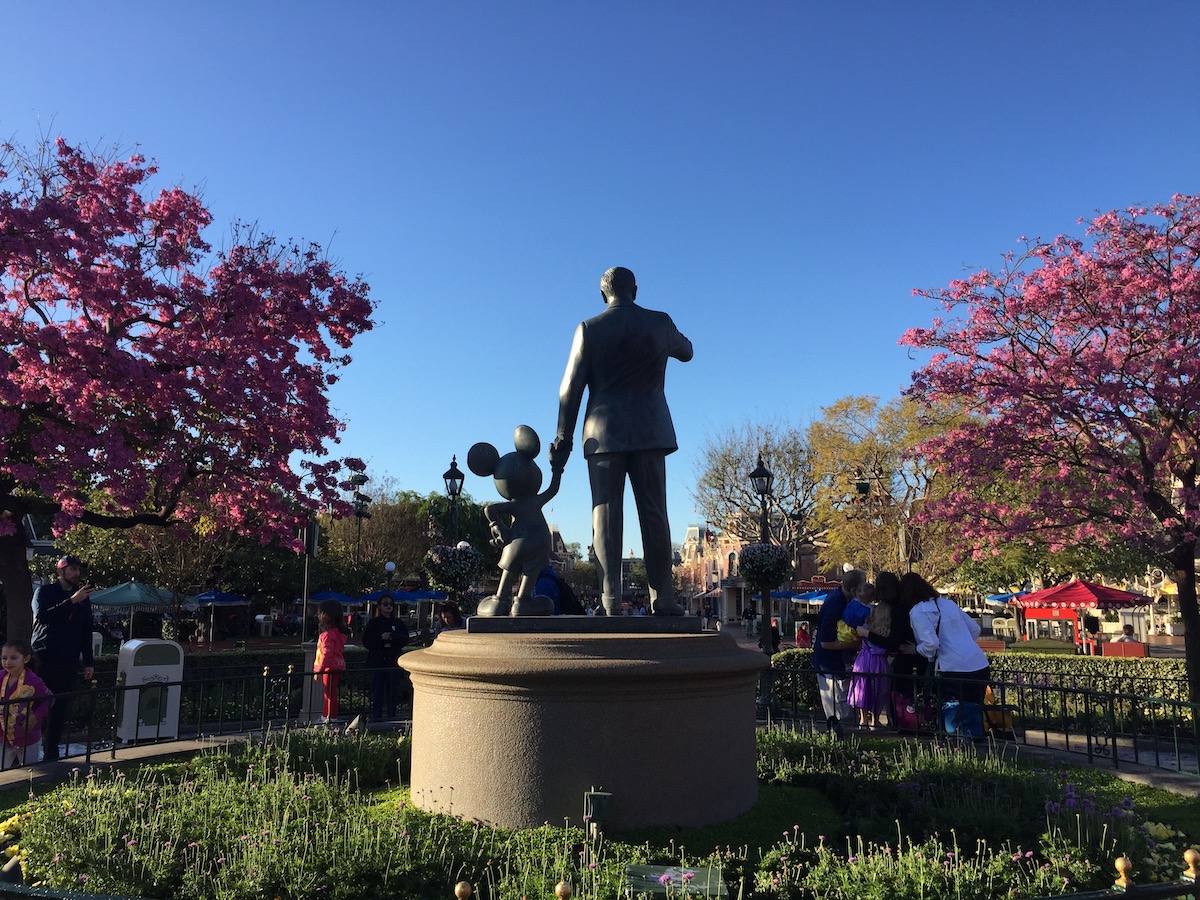
Plenty of Disney rides (the majority, probably) achieve narrative immersion through traditional storytelling. Pinocchio's Daring Journey, Splash Mountain, and Mystic Manor are examples of such rides. Few rides don't even attempt at narrative immersion. Carrousels, Mad Tea Party, and Slinky Dog ZigZag Spin are rides lacking narrative immersion.
Arguably, the best type of narrative immersion occurs when a guest becomes a character in the story. Star Wars: Galaxy's Edge was once promised to take this idea to a new level, with the expectation that characters in the land would interact with you differently based on, for example, how well you did on Millennium Falcon: Smugglers Run or what levels you attained (and for which side) using the app-based "Datapad."
This didn't happen, though the flagship ride of the land, Star Wars: Rise of the Resistance arguably does a better job of bringing you into a story than any other attraction in the world. In any case, this in-depth immersion already present in how you experience lands and attractions—Mr. Toad's Wild Ride, Avatar: Flight of Passage, and Rock 'n' Roller Coaster are all examples of this.
I have to also mention that the Galactic Starcruiser—Disney's Star Wars-themed hotel, debuting in 2022—is now expected to take narrative immersion to a new level, including through connections to Galaxy's Edge.
The hotel isn't a ride or attraction, but if it's successful it'll perhaps mean a new era of themed entertainment is upon us. LARPing isn't itself new, but if the Disney team throws their weight behind creating more of these experiences, we could see major changes come to theme parks. Or perhaps these experiences will stand on their own while theme parks will focus less on immersion and more on rides.
Important to our definition, though, is that a traditional "story" isn't completely necessary. Some theme parks or attractions convey a lesson in a story-like manner but without a series of causally-connected events.
One example of such an attraction is "it's a small world." The lesson here is the similarity and unity of all people. That lesson is conveyed in the largely physical similarities of the dolls (despite differences in certain features), the constant music/melody of the song, the consistent lyrics (despite its changing languages), and the cross-cultural use of dance as a means of expression.
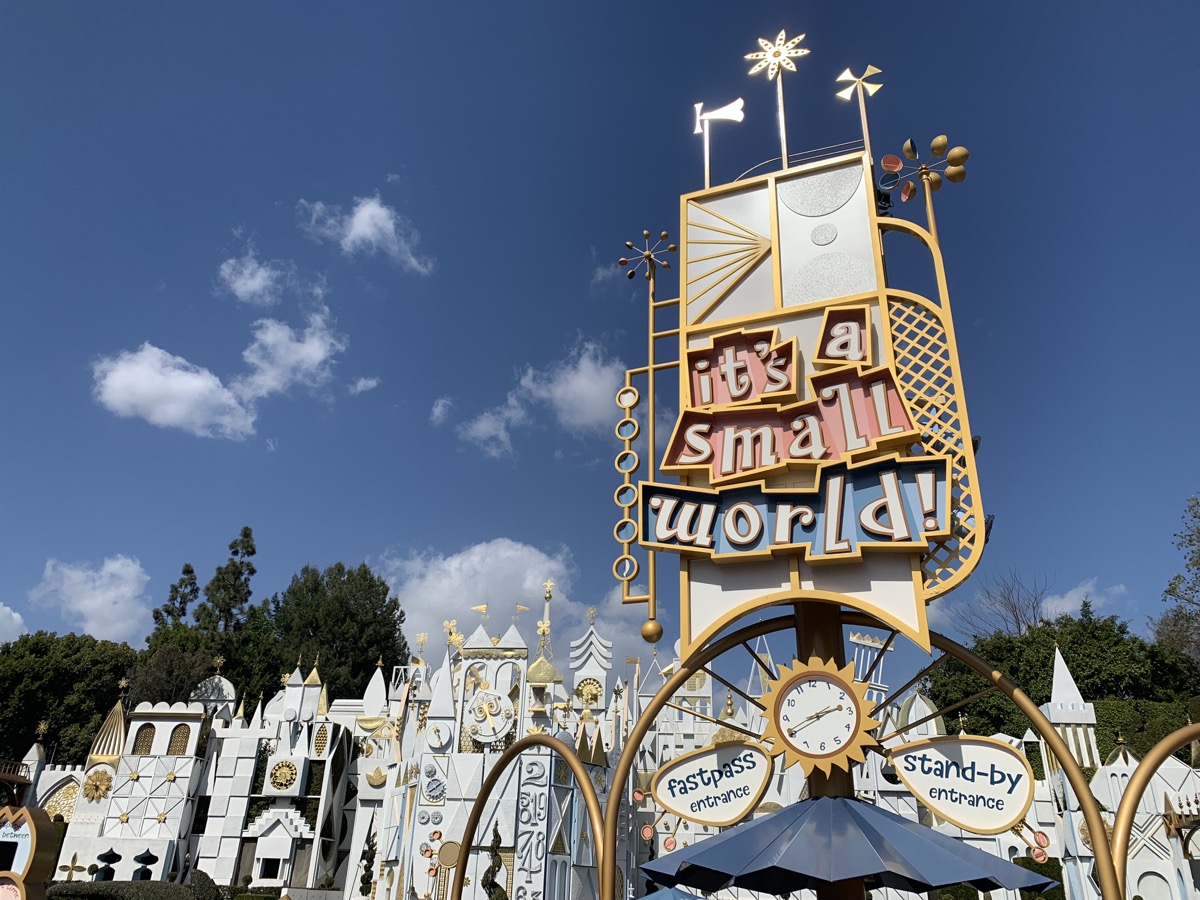
Your experiences across scenes of "it's a small world" are all connected. They aren't causally connected, as in a typical story, but they are experientially and thematically connected. This experiential connection, whether it occurs in the face of a series of casually connected events or not, is what creates narrative immersion.
What's important, and what distinguishes narrative immersion from detail/design immersion is that your experiences and interactions with those details and designs are a part of a unified experience with a unified message.
The Relationship Between Rides, Lands, And Parks
If a good theme park is a collection of stories, the interplay of narrative within a ride, narrative within a land, and narrative within a park is also important to understand. Luckily it's also pretty simple—these things form a pyramid with a park at the top, lands in the middle, and rides at the bottom.
Theme parks and lands might be thought more like storybooks or collections of connected stories than individual stories. Those stories are connected by a theme. But the best storybook isn't simply a collection of similarly-themed stories. The best storybook has a unified lesson, maybe even an "arc" or journey that it takes the reader on. The best theme parks collect stories (rides) into chapters (lands), and connect those chapters into one overarching idea (theme).
Focusing on rides / lands, let's contrast two neighboring rides in a very popular land—Slinky Dog Dash and Toy Story Mania in Toy Story Land.
The theme of Hollywood Studios is something like "hey you, you're in a movie now", but specifically Toy Story Land is meant to be Andy's backyard. You're transformed to the size of a toy, and you're hanging out with some of Andy's toys. This all gets a bit muddled when Buzz greets guests in front of a Woody about 10X his height, but that's not the point here.
Slinky Dog Dash does an exquisite job telling the story of its land. The queue and ride design show you that Andy has combined his toy Slinky Dog with a "Dash and Dodge Coaster" kit. It's all simple, fine, but it's detailed and well-done.
By contrast, Toy Story Mania—a great ride—is ironically an abysmal match for the theme of Toy Story Land. Why? Because Andy wouldn't own a play set called "Toy Story Mania" or really anything with the words "Toy Story" on it. It just doesn't make any sense. (The reason for this is just that the ride pre-dates the land.)
Does this oversight make Hollywood Studios a worse park, or Toy Story Land a worse land? Probably not, but I think it's at least a more enlightening example than pondering, for example, what the heck the Guardians of the Galaxy have to do with Epcot.
Identifying The "Theme"
My earlier joke about the theme of Hollywood Studios brings us to a larger question—how does one identify the theme of the park?
One place to start is the name of the park. This will rarely tell the entire story, but it will often at least tip you off as to the general direction. "Animal Kingdom," "Hollywood Studios," "California Adventure," and "DisneySea" are examples of names that tip their hand a bit. "Disneyland" is unfortunately unhelpful, and perhaps even a bit of misdirection.
The second place to look is where we'll famously find the theme of Disneyland—the park's dedication. In Disneyland's dedication, Walt Disney explicitly told us "Disneyland is dedicated to the ideals, the dreams, and the hard facts that have created America…"

So in case you thought the theme of Disneyland was "Disney movies," you were sorely (but justifiably) mistaken. The theme is "the ideals, the dreams, and the hard facts that have created America."
There are other sources one would look to for theme. Creators, designers, imagineers, and executives are all fine ideas. From all of these sources, you'll get a good idea of the theme. But there is one better place to look.
The final place to find the theme is in the park itself. Examine the park. Listen to it. Figure out what the park tells you. That's the theme. The best theme park doesn't even have to tell you its theme. It could be named "Walt's Theme Park" without any dedication, and it would tell you its theme.
Animal Kingdom's theme isn't simply "animals," despite the name. In one word, I think it is "nature." In several, I think it is "the relationship between humans and nature."

That doesn't mean the park screams its theme at you. I'm not sure I would ever have identified the "America" part of Walt's dedication without being told it. But over time, certainly one comes to understand that it is about the interplay of exploration, science, and fantasy. The park is clearly about the past, the future, and the dreams that are responsible for both.
Theme & The Castle Parks
This brings us near to the close, but with one challenge—the challenge of evaluating the theme of the different castle parks. Disneyland, as the original castle park, is the only one with a truly unique theme. Just as all philosophy has been said to be footnotes to Plato, you might say that all the castle parks are just interpretations of Disneyland.

International castle parks are particularly challenging to evaluate. Disneyland is explicitly dedicated to the ideals, dreams, and hard facts that created America. It would be awkward for the international parks to take a shot at better execution on that theme.
Shanghai Disneyland, indeed, clearly eschews that theme altogether. That park substitutes Treasure Cove (Caribbean themed) for Frontierland (an undeniably American land). It also replaces Main Street, U.S.A. with the ill-conceived "Mickey Ave." The park is left, sadly, without much of a theme.
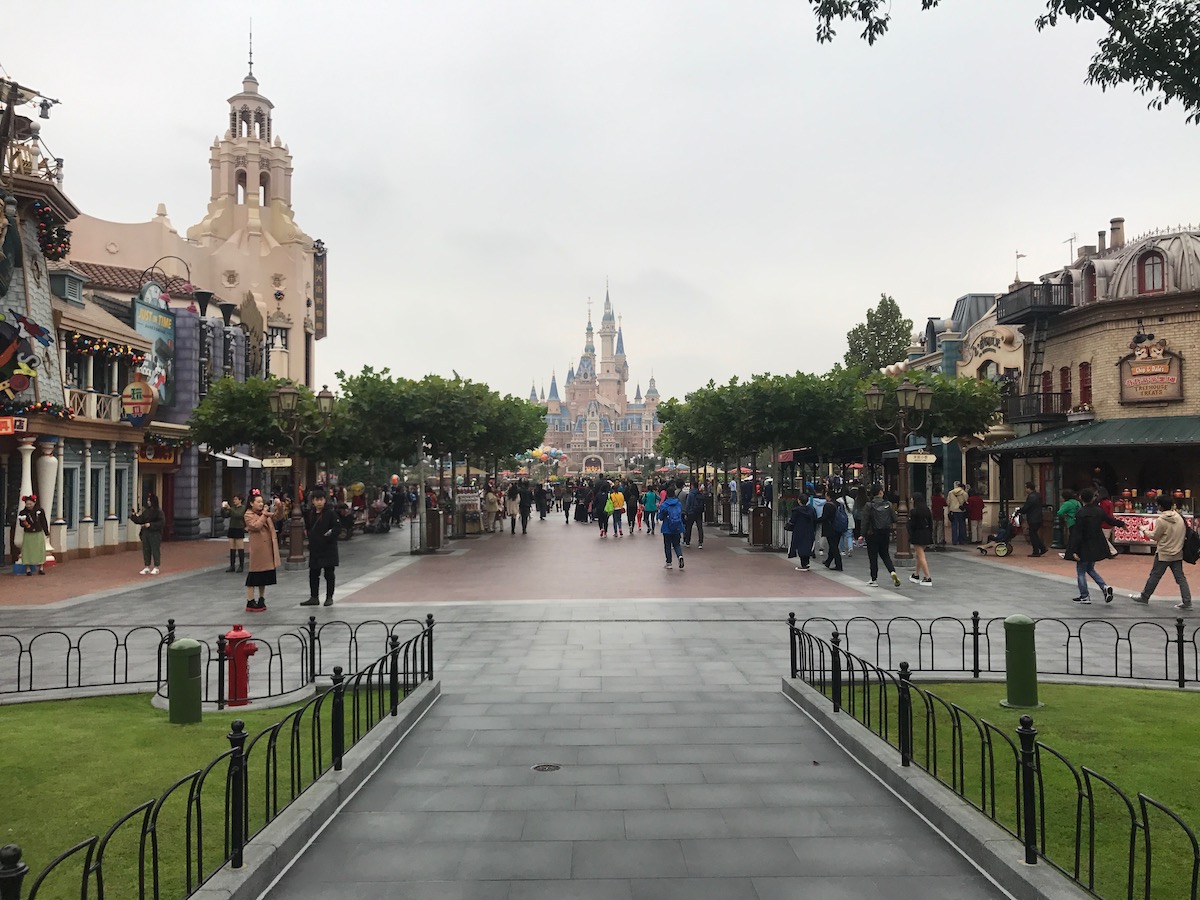
Disneyland winds up being the clear winner here, because it has and exemplifies a theme that is something more than fun and imagination. In truth, we're not sure if that impacted its position in our rankings. What we can say is that when we talk about castle parks, we're sort of forced to put bigger questions of theme to the side.
If you stuck with us until now, thanks!! Please do let us know what we got right and what we got wrong. We're far from theme park experts, even if we're something close to experts on a few Disney parks. But now, onto the part everyone cares most about...
Here's how we rank all the Disney parks, worldwide…
12. Walt Disney Studios Park
Walt Disney Studios Park is the "other" park at Disneyland Paris. At its most basic, the park is an interpretation of Hollywood Studios. The park has two unique rides, Cars ROAD TRIP and Crush's Coaster.

The park's design completely misunderstands what makes a theme park "tick." Some of the best design elements of Hollywood Studios were taken and stuffed into Disney Studio 1, an indoor boulevard of shops and restaurants, while much of the rest of the park is left bland and uninteresting.
The French-themed area with the Ratatouille ride is quite nice, but now that the ride and land design have been largely replicated in Epcot's France pavilion it doesn't pack as much of a kick. Toy Story Playland feels a bit cramped with attractions that seem to be there only to give the park something of a ride count, and suffers from comparisons to Walt Disney World's Toy Story Land.
The park is the only true "half-day park" in the Disney portfolio.
The limited ride count—under ten (all the ride counts in this post are "depending on how you count")—isn't doing the park any favors, but at the same time this is about standard for parks other than the castle parks. The park's lack of popularity is something to behold, as even heavy hitting duplicates like Tower of Terror rarely have substantial waits.
It's possible better days are ahead for Walt Disney Studios Park. The 2020 / 2021 closure caused great disruption to all of Disney's plans. While it's unlikely the park will ever be so transformed as to make the top five of this list, additions like Iron Man Jukebox and the upcoming Avengers Campus land would help.
11. Hong Kong Disneyland
There is good in Hong Kong Disneyland, there just isn't much of it. The park is small enough to be fully experienced in a day, which makes it unique among castle parks. There are standout attractions, like Mystic Manor and Big Grizzly Mountain Runaway Mine Cars, but the park overall suffers from the same patchwork problem that plagues Walt Disney Studios Park.
I read in the fantastic book The Haunted Mansion: Imagineering a Disney Classic that the park has a number of small lands in part because of a cultural predisposition toward numerousness over depth. If true, our feelings of negativity toward the patchwork nature may just be a cultural disconnect.

More to the point, though, Hong Kong Disneyland is the park that suffers most from being an interpretation of Disneyland. And it's the only castle park that doesn't really do anything better than Disneyland.
It's worth mentioning here that there does seem to be a Disney parks sub-culture that thinks we're really wrong about the park. Chiefly, they point to an otherwise undefinable "charm" in the park. I mean, it's small, I'll give them that.
At under 20 rides, it's on the lower end of the castle park list by ride count. We already discussed why you can't go just by ride count, but it's hard to line Hong Kong Disneyland up against the other castle parks without placing it at or near the bottom.
In the same way that Disney has recently shown interest in improving Walt Disney Studios Park, they have plans to improve Hong Kong Disneyland. Hopefully, the addition of new lands and some changes to the castle will help this park come into its own.
10. Shanghai Disneyland
Shanghai Disneyland is ambitious. The park offers TRON Lightcycle Power Run, Pirates of the Caribbean: Battle for the Sunken Treasure, and what could be under-the-radar Disney's best attraction worldwide, Challenge Trails. Unlike the other castle parks, which mostly recycle lands and designs, Shanghai swung for the fences with a hyper-modernized Tomorrowland and an entirely new land, Treasure Cove.
Parts of Shanghai Disneyland are simply stunning. The details in many parts are stunning. Despite being lower on this list than several castle parks, this might be the international castle park we're most likely to recommend a visit to, simply because of its willingness to be different.

But Shanghai's ambition and need to be different get it into trouble. Mickey Ave., an attempt to bring a cartoon flare to the entrance of the park, is a tacky replacement for Main Street U.S.A. The castle is the largest Disney has ever built, its absurd size fitting for a park with an absurd amount of open space (which residents of Shanghai are likely to find appealing, we admit).
With around 17 rides, Shanghai sits with Hong Kong Disneyland at the bottom of the ride count for castle parks. This is a bit surprising because with its over-the-top need to be different and gargantuan size, Shanghai Disneyland is the castle park otherwise most different from Hong Kong Disneyland. At the end of the day, this is sort of an A+ for being different, but a C on most every other count.
We'll throw this in here. There's a lot of nonsense around the internet about the behavior of Chinese guests at Shanghai Disneyland. Frankly, we found the behavior in Shanghai Disneyland to be among the best in all Disney parks, possibly second only to Tokyo. Were there "incidents"—sure, a few—but on average I've been more offended in many other parks.

9. Epcot
Updates: I have two updates about Epcot. First, it is currently a construction zone (not entirely, but significantly). Second, the combination of construction and often heavy festival crowds can combine for a pretty poor experience some days. Based on current guest experience, I'd put the park at #11.
I spent years of feeling like I didn't "get" Epcot. See, others seemed to get it, or at least they pretended to, and I just couldn't figure it out. Finally, I listened more to what people were saying (including in the comments here), and it hit me—I don't get Epcot because I didn't experience it when it was actually a great theme park.

Theme parks are in constant tension. Should they offer the best ride possible? Should they stick entirely to their theme? What if guests don't care for the theme?
Epcot was ahead of its time as far as theme park design. It chose an incredibly ambitious theme—let's call it "progress"—and it threw it in your face, not really caring whether or not you wanted something with a little more whimsy.

But that was before. When the park had things like Horizons, Wonders of Life, World of Motion, and the original Imagination! pavilion. While we could argue about the old attraction portfolio vs. the modern one, there's no doubt the theme was more coherent "back in the day." The modern park is a little tougher to analyze.
On one hand is the World Showcase. Eleven themed lands each celebrating a different country, all standing side by side. With food, drinks, shopping, design elements, and even people from the different countries, the World Showcase is a fantastic place to be, and it is Disney design at its finest.

Then there is Future World. While it used to be a true celebration of human achievement, Future World has lost much of its luster to time. It retains some high-quality experiences, though. Soarin' remains a top Disney attraction, and while Test Track has been strongly bested by its technological descendant, Radiator Springs Racers in Disney California Adventure, it remains a hit ride. And let's never forget Living With The Land!
Like several other parks on this side of the list, a large overhaul of Epcot is ongoing. The park now has Remy's Ratatouille Adventure, a ride that fits well into the France pavilion but that doesn't move the needle on this list. The addition of the probably off-theme Guardians of the Galaxy ride will bring the ride count up to 11, putting the park well clear of the bottom of this list. Future World will hopefully have some wondrous new elements when construction is completed.
Finally, I want to say that—construction aside—if I were to give just an ounce more weight to beauty, Epcot would be near the top of this list. The number of awe-inspiring, stunning views you can find in this park easily put it in contention for most beautiful theme park in the world. (Of course, we should take a second to note that the World Showcase is now marred by the gigantic Harmonious barges.)

8. Disney's Animal Kingdom
This is a tough one. Animal Kingdom used to be in the top spot of these rankings. To move it all the way down to #8 is…tough. The drop happened for a few reasons.
First, the park has gotten older. Once TRON opens at Magic Kingdom, Animal Kingdom will be the Disney World park to have gone the longest without a new attraction. What's worse, the park has also lost an attraction, as Primeval Whirl has permanently closed.
Second, we've gotten older. Or at least, our opinions have changed. Maybe it's this work. Maybe it's having a baby. But wandering a theme park soaking in the details just isn't what it used to be. Is it still super important? Yea, I wrote all those words above about theme for a reason. Without its near-perfect execution of theme, Animal Kingdom would be even lower on this list.

Third, the park suffered most from the closure. Festival of the Lion King is shown in modified form. Finding Nemo — The Musical has yet to return. The bird show theater is showing…yet another nondescript bird show. Streetmosphere cuts are only slowly being reversed.
Some of these issues pre-date the closure. Burudika was cut before the closure, and the Anandapur theater has struggled for a while to keep a consistent show. But the summary of these things is that Animal Kingdom just doesn't hit like it used to.
On the plus side, Kilimanjaro Safaris is an absolute treasure of an attraction. Flight of Passage is still arguably the best attraction in all of Walt Disney World.

Expedition Everest: Legend of the Forbidden Mountain, from queue to gift shop, ranks among our favorite Disney experiences. Plus let's not forget Tiffins and Nomad Lounge, two great non-attractions in the park.
And, of course, Animal Kingdom is the park that taught us about theme. Like Tokyo DisneySea, Animal Kingdom is truly about something. It's about the relationship between humans and nature. And while Tokyo DisneySea does an excellent job of molding its ports to its theme and its rides to its ports, Animal Kingdom is better at fitting the individual rides to the theme.
I've written about this at length in my post celebrating the 20th birthday of Animal Kingdom, but the individual attractions in Animal Kingdom each tell us something about how we connect with nature. There's really no escaping that idea once you step foot in the park, and that still sets it apart from the other parks on this list, even if it doesn't keep the park at the top of our list anymore.
7. Disney California Adventure
California Adventure would be much further down this list if not for one big reason—Cars Land. Cars Land is one of the finest spaces Disney has created in the world. While we've consistently been disappointed by Toy Story Lands and we aren't impressed with Pixar Pier, Cars Land is what a land based on a Pixar product should look like. It's in keeping with the theme of the park, it's immersive, and it's just downright beautiful.
Avengers Campus opened in 2021, and while we haven't yet had the opportunity to visit we're confident it wouldn't move the park up on this list. It's clearly a pretty good land, but the WEB Slingers ride has received mixed reviews for being similar to the very old Toy Story Mania (also present in this park). The open question here is whether the Quinjet attraction, once expected to be the hallmark of the land, if not then entire park, is still in development and on what sort of timeline.

Outside of those lands, California Adventure has some other standouts. The ride count of 18 puts it in castle park territory, but it's also partly a lesson in "more is not always better," as a huge chunk of the rides around Pixar Pier and Paradise Gardens Park can be accomplished in about as much time as Pirates of the Caribbean at Disneyland will take.
Those rides aside, you still have to be impressed by much of the park's heavy hitters. Guardians of the Galaxy —Mission: Breakout!, while having little to do with California, is a great ride. Pixar Pier—while not a great land—certainly looks great and boasts the underrated (in our book) swinging cars on the Pixar Pal-A-Round.
Grizzly Peak is another standout land from a design perspective. And World of Color is a unique Disney offering that many consider among the best nighttime shows.
Ultimately the park feels appropriately placed almost right in the middle of this list. It's a good park with standout attractions and no obvious flaws, it just doesn't have the same "wow" experience the remaining six parks have.
6. Hollywood Studios
This is really the turning point of the list, and each of the remaining parks is its own masterclass in how Disney somehow manages to outdo itself. We start with Hollywood Studios, a park that still packs a relatively small number of rides…but that small collection is just about as impressive a group as you can find.
The addition of Star Wars: Galaxy's Edge and Mickey & Minnie's Runaway Railway has helped Hollywood Studios greatly, moving it up from the tenth spot it used to occupy all the way up to spot six. It still can't compete with the elite castle parks, but the park's development has been well received.
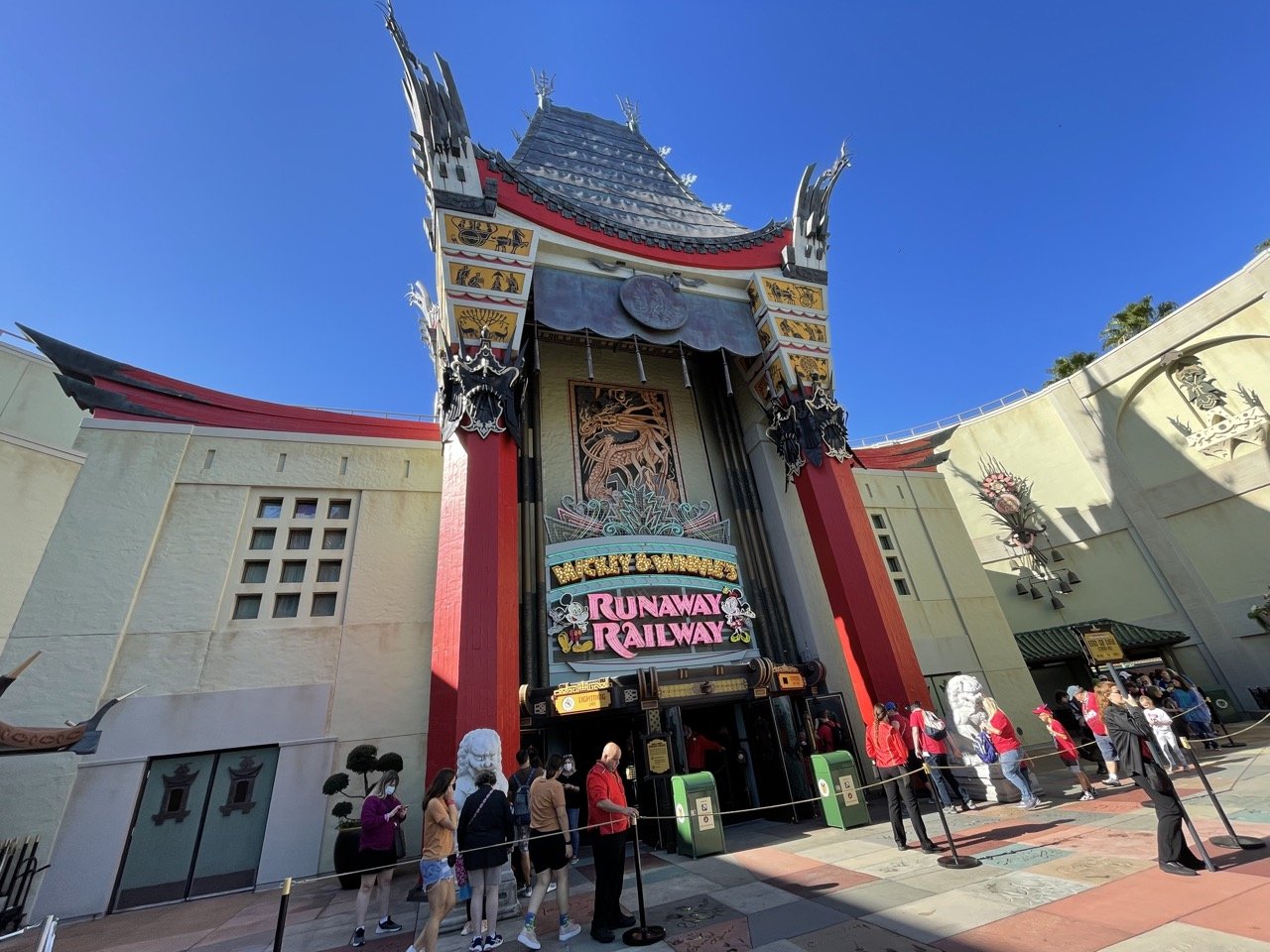
With only nine rides, Hollywood Studios relies on two things. First, the rides it has are among the best in the world. Rise of the Resistance and Tower of Terror are two of the greatest rides ever. There's only one weak ride in the park, Alien Swirling Saucers.
Second, the park has a strong lineup of non-ride attractions. Beauty and the Beast Live on Stage, the Frozen Sing Along, the Indiana Jones Stunt Spectacular, and, yea, even Lightning McQueen's Racing Academy go a long way to making Hollywood Studios an enjoyable, day-long experience.
While much of the park is designed around Hollywood as a city and the studios as an experience, the heart of the park is transitioning to be more simply about putting the guests in the films. Is this a weak theme? Maybe—after all, all theme parks are about putting guests in a story.
Regardless, Toy Story Land and Galaxy's Edge are committed to this idea. They continue the tradition of Twilight Zone Tower of Terror,Honey, I Shrunk the Kids: Movie Set Adventure, and Star Tours: The Adventures Continue.

Galaxy's Edge, while great, wasn't the transformative experience we all hoped for (we covered this all above). But Rise of the Resistance is one-of-a-kind, and even Millennium Falcon: Smugglers Run brings a new flavor to Walt Disney World.
Similar to Animal Kingdom dropping in this ranking, I'd also credit changes in how we view the parks with Hollywood Studios moving up on this list. Galaxy's Edge is a good land. Toy Story Land is a good land. But the park overall doesn't excel in theme. It does excel in attractions, entertainment, and beauty, though.
Part of what it comes down to is that in our recent trips, we keep winding up at Hollywood Studios. Whether it's because we want to grab a quick bite at Woody's Lunchbox or Ronto Roasters, or because we lucked into a Lightning Lane for Slinky Dog Dash, or because we want to wander Galaxy's Edge and use single rider for Smugglers Run…there just always seems to be a good reason to pay the park a visit.
All that said, while I've got a new appreciation for the park, I'm not so lovestruck as to say it rivals the top tier of castle parks. So let's get to those.
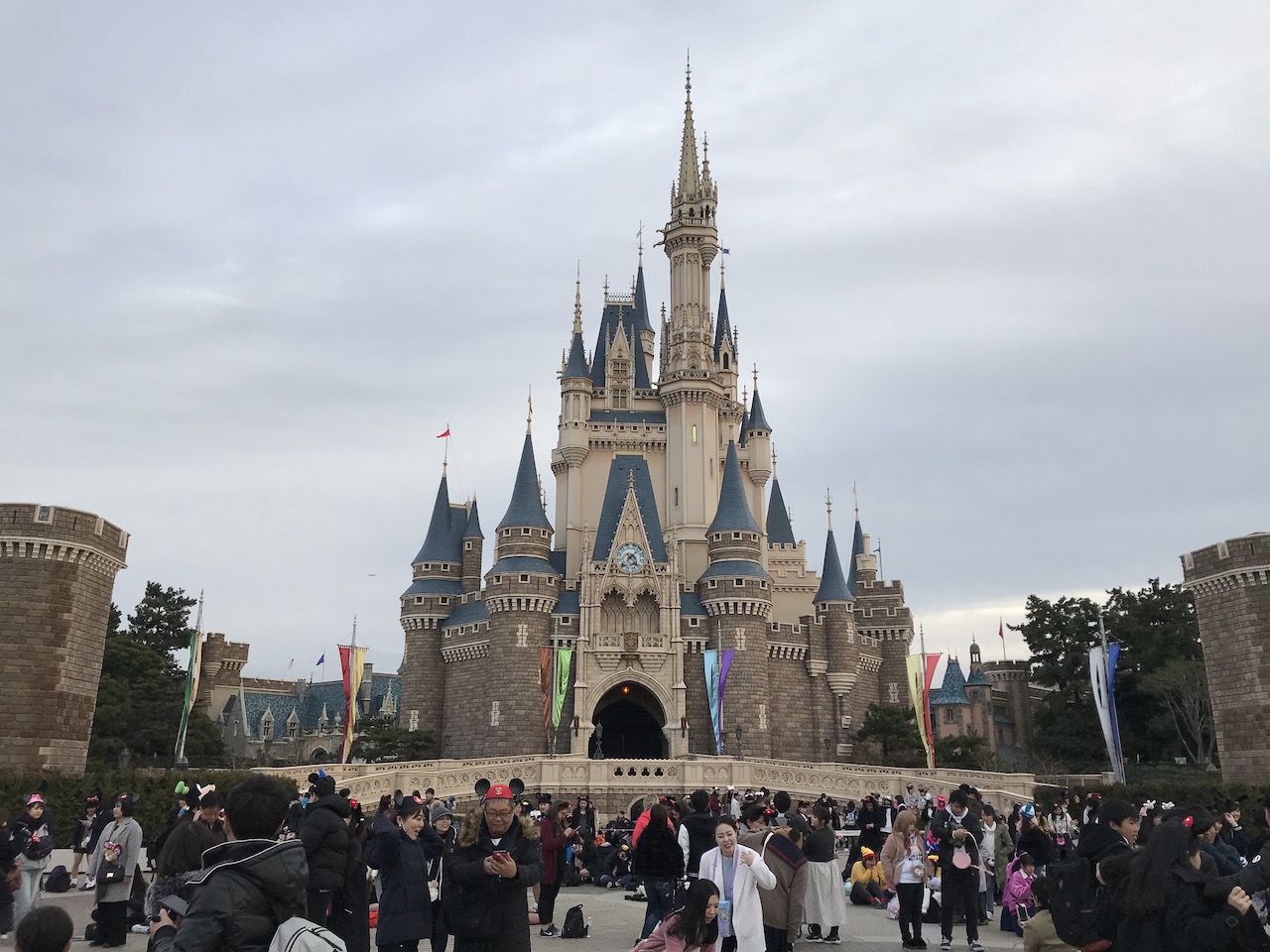
It's really hard to find fault in Tokyo Disneyland. It offers a lineup of about 24 attractions that largely mirrors the other castle parks, but with the added bonus of an improved Winnie the Pooh ride,Pooh's Honey Hunt, and Monsters, Inc. Ride & Go Seek—an enhanced (and superior) version of the Disney California Adventure dark ride.
Then there are the smaller factors. The cast members in Tokyo are the best in the business (no offense to all the others, who are great as well!) The food, particularly the snacks, in Tokyo is legendary.
In these ways, Tokyo Disneyland is everything in a near-carbon-copy park that Hong Kong Disneyland isn't. Where Hong Kong Disneyland held back on some of the most important elements of Disneyland, Tokyo Disneyland took Magic Kingdom and made simple, positive changes. But that's the only thing that holds it back on this list—the enhancements just don't do enough to distinguish the park.
As Disney's first international park, its unsurprising they didn't swing for the fences with Tokyo Disneyland. The park is nowhere near the departure from norms that Shanghai Disneyland is, for example. And it may suffer from sitting next door to Tokyo DisneySea, which you should have noticed has not appeared yet on this list.
4. Disneyland Paris
If there were going to be a tie on this list, it would probably be in the fourth and fifth spots. While there are areas in which Disneyland Paris is clearly superior to Tokyo, it's not at all clear that it is better overall.
Like Tokyo, Paris borrows heavily from the American parks' attractions, and it has about the same number of rides (we peg it around 22, Tokyo at 24). The difference is really that Paris obviously tried to bring some new twists to the table.

Disneyland Paris was the first new Disney park either of us visited in 20 years. As such, it took some getting used to. But as we spent more time in it, we came to deeply appreciate the storytelling that goes on in the park.
The park's castle is a standout. Remember—Tokyo kept the design of Cinderella Castle. But Sleeping Beauty Castle and Cinderella Castle wouldn't work as well in Europe, where castles aren't a rarity. The result is a castle that is unique and rich in design. The Dragon's Lair under the castle is the single best use of castle space in a Disney park.
On the other hand is Discoveryland. We don't love the aesthetic, but we don't dislike it so much as to penalize the park for it. Jules Verne was French, and a land in Paris that pays tribute to the "godfather of steampunk" is a fine use of the space.
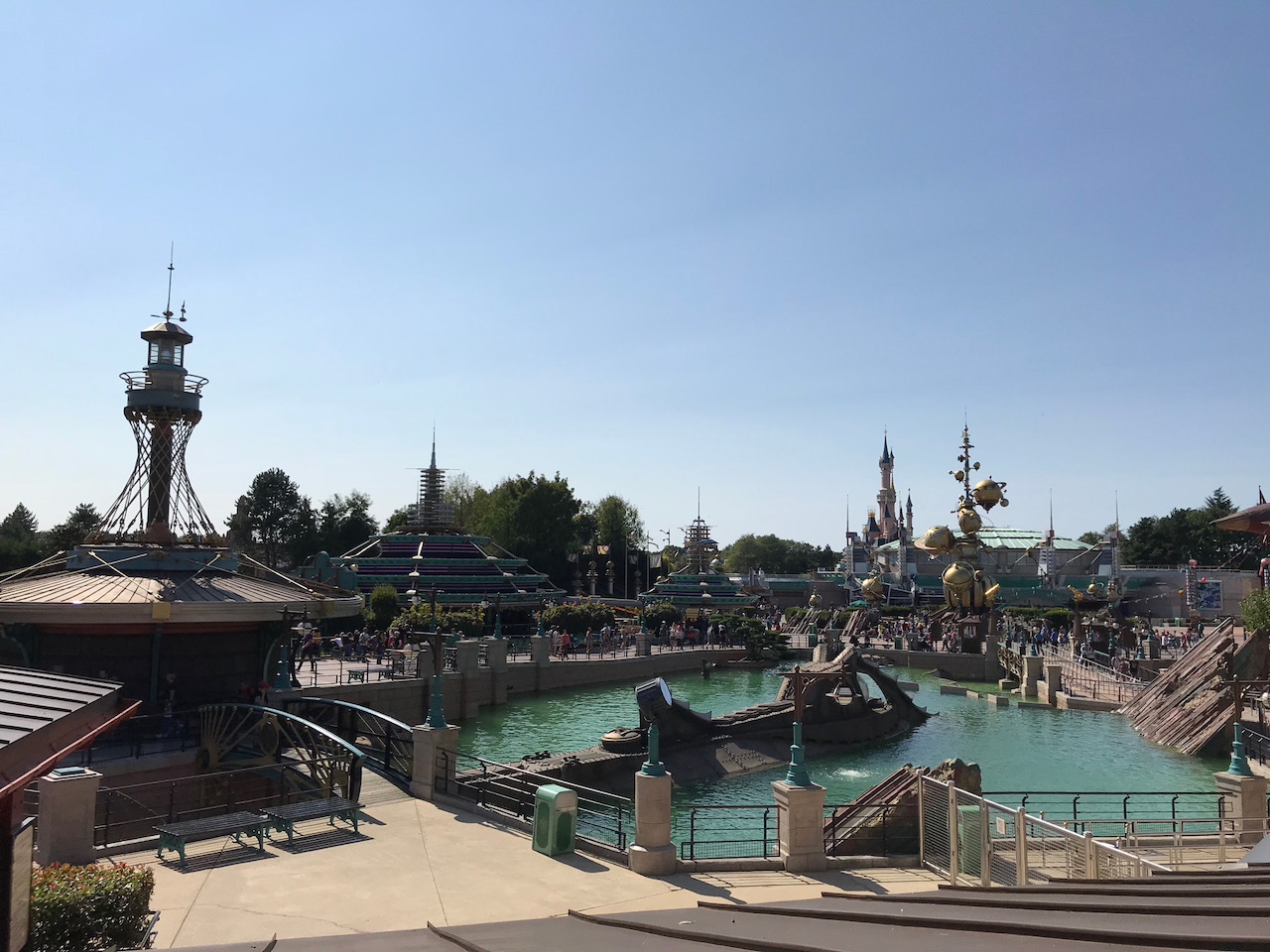
Disneyland Paris's Frontierland is one of the rare Disney lands with a rich storyline itself (something more common now than five-plus years ago when this list debuted, though), and you might not even notice it your first few times in the land. Adventure Isle is one of the best spaces to explore in Disney parks. Swiss Family Treehouse and the Queen of Heart's castle in Alice's Curious Labyrinth offer tremendous views.
Disneyland Paris its noted—not just by us—for its beauty. Every inch of the park oozes with beautiful detail. It also has some of the best sight-lines of all the parks, best probably only by Tokyo DisneySea.
In terms of operations and food selection, Disneyland Paris would probably be last on this list. But the things it does well are important, and it does them incredibly well.
3. Disneyland Park
Let's start with the elephant in the room—here at number three is Disneyland, and ahead at number two is Magic Kingdom.
If you want, just file this discussion under "you just can't compare the most magical place on earth to the happiest place on earth." We once had Magic Kingdom as low as #6. Now it's all the way at #2. That's just how close these four castle parks (which currently occupy spots 2 through 5) are to us.

But we promised a ranking, and we're going to deliver. Both of these parks have qualities that set theme apart from the other in both positive and negative ways, at the end, we give the edge to Magic Kingdom. Keep reading to learn why.
Disneyland Park is a fantastic theme park beyond its unique position in Disney history as the original, Walt-built park. The park, dedicated to the dreams, ideals, and hard facts that made America is a design masterpiece, packed with some of the best attractions Disney has to offer.
Disneyland executes amazingly on a challenging theme. Disneyland's execution of that theme, though, is remarkably subtle. If you asked nine out of ten people in the park on a given day what it was dedicated to—what it's theme is—they would probably only get as close as "imagination"—which honestly is probably more fitting these days.
And there's nothing wrong with that, it's a joyous imaginative place. But underneath is a story about America—about its past and its future, and about the dreams that drive the American spirit.
And once you really see that, you can't un-see it. But part of the problem with modern Disneyland is that it's trending toward leaving that behind. Toontown in 1993 and, most recently, Star Wars Galaxy's Edge in 2019, exemplify this trend. Do these lands enhance the theme of the park—or do they just add space and attractions?
With an attraction lineup around 34 rides deep, Disneyland is a titan of a theme park unlike any other. By our count, the other castle parks range from 17 to 24—and that's partly what helps Disneyland rank ahead of all but one of them.

What's more, Disneyland has the best streetmosphere of the castle parks. Groups like the Straw Hatters and Pearly Band create a sense of Magic that you can't really beat in any other park.
Perhaps the best thing that Disneyland has to offer is a lens on all the other Disney parks, especially the castle parks. So many rides find their origin and inspiration in this park.
Duplicates like Pinocchio's Daring Journey were born here. Ambitious interpretations like Shanghai's Pirates of the Caribbean are still compared to the original.
You don't know just how perfect Space Mountain can be until you've ridden the Disneyland version. And let's be real—Mr. Toad's Wild Ride is just an unbeatable dark ride.
The most awkward part of this ranking is justifying how Disneyland + Rise of the Resistance doesn't rank higher than Magic Kingdom. I think the answer is simply that while Galaxy's Edge is a great land, it doesn't fit the theme of the park too well and the park already had an amazing ride lineup before Rise of the Resistance. This goes back to a point much earlier in this post, we don't give much credit for just adding great rides on top of great rides after a certain point.
2. Magic Kingdom
Magic Kingdom really feels like what it is—Disneyland 2.0. The castle is bigger. The park layout is much better-planned. Main Street, U.S.A. is a little fancier and little less small town.
On its face, Magic Kingdom is the castle park that stays most faithful to the original theme. Indeed, Magic Kingdom in its current state is more faithful to the original theme of Disneyland than is Disneyland itself. Disneyland has the originality points, but Magic Kingdom gets the execution points on this count.
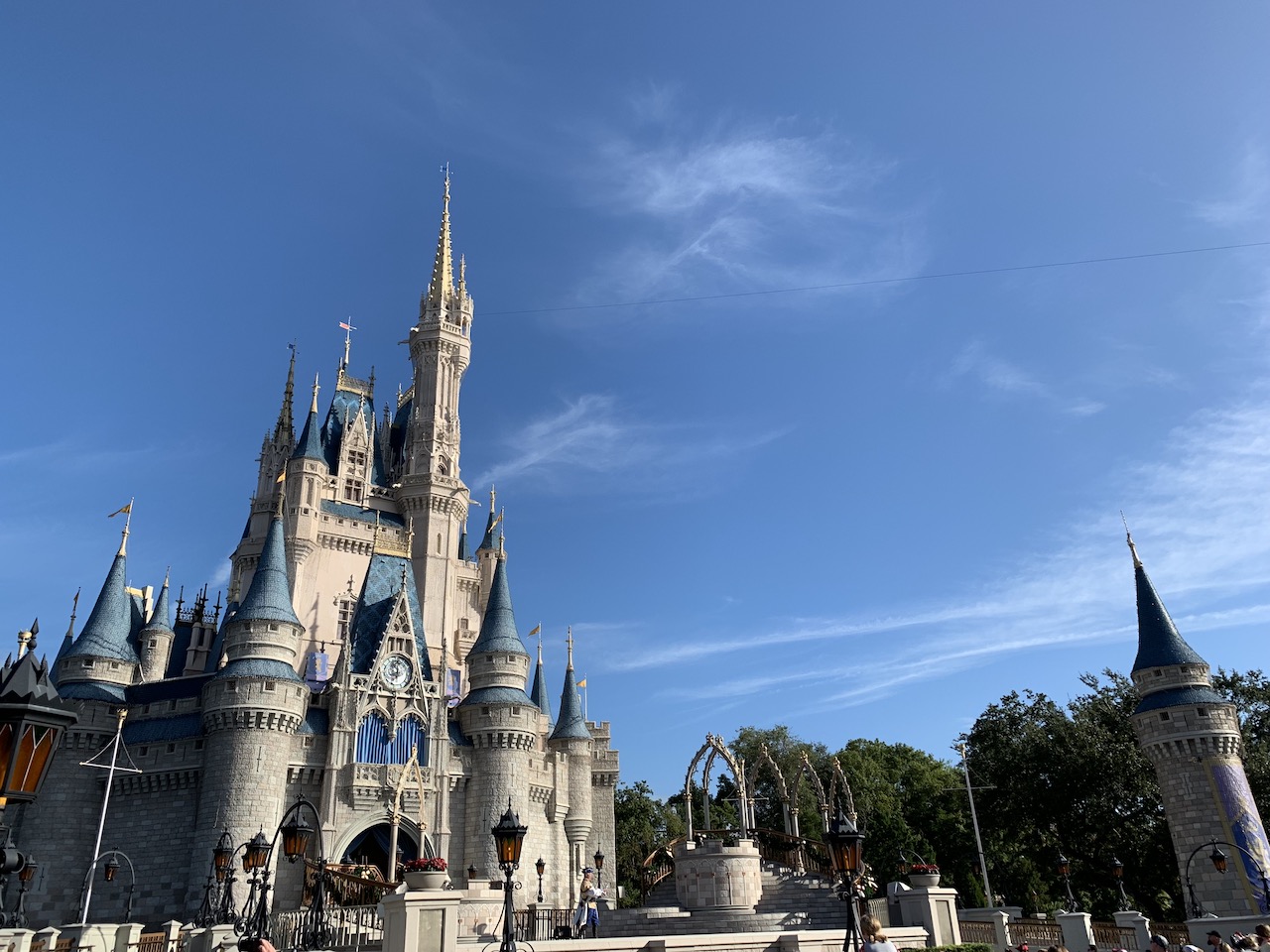
Let's dig deeper. Here's what we used to say about Magic Kingdom, back when we ranked it all the way down at #6:
If Magic Kingdom has a fault, it's having to share the best attractions with three other parks.Star Tours: The Adventures Continue finds its home in Hollywood Studios, rather than Tomorrowland (where it is in other parks).DINOSAUR, Florida's technological equivalent of Disneyland highlight Indiana Jones Adventure, is placed in Animal Kingdom.
The blessing of space in Florida means that great ideas don't have to be shoved into every corner available to Magic Kingdom. Does this create a better guest experience in many ways? Of course! But do we think the individual park sits a little lower for it? Yes.
The me who wrote that had one word he liked to use behind closed doors to describe Magic Kingdom—sterile. In contrast to Disneyland, something just didn't sit right with me for a while. That is to say, I understand how many Disneyland diehards feel. But things change.
Our experiences both in Magic Kingdom and in Disneyland over the past year have caused us to change our tune. Instead of looking at what Magic Kingdom lacks, let's look at a key set of attractions it has:
-
Walt Disney's Carousel of Progress
-
Country Bear Jamboree
-
Tomorrowland Transit Authority PeopleMover
-
Walt Disney's Enchanted Tiki Room (also in Disneyland)
-
Hall of Presidents (we'll call it the counterpart to Disneyland's Great Moments with Mr. Lincoln)
The presence of those first three—in Magic Kingdom and not Disneyland—along with the two with Disneyland counterparts creates a balance in Magic Kingdom that Disneyland lacks—the balance between running between 3-minute experiences and kicking back for 10 minutes for a bit of relaxation, away from the chaos of it all.

In truth, it's a balance that's more necessary in Florida's climate than in California's. But escaping the crowds, at least, is something that's necessary in ever park.
By attraction count, Disneyland has Magic Kingdom beat. Maybe even by average attraction quality Disneyland has Magic Kingdom beat. But if I'm comparing the two and looking at piecing together the perfect day, I think Magic Kingdom has a much more enjoyable experience.
Are there biases here? Definitely. I write primarily for vacationers, while Disneyland has a heavy tilt toward locals. I'm much for familiar with touring strategy at Magic Kingdom. And—not gonna lie—I personally prefer Country Bear Jamboree to Millennium Falcon: Smugglers Run.
The differences here are small. I'm positive many people will shake their heads at the division I draw that put Magic Kingdom ahead of Disneyland. But when all is said and done, I think these parks are incredibly close in quality, but Magic Kingdom is a hair superior.
1. Tokyo DisneySea
Emily and I used to be in disagreement as to the best Disney park. She felt it was Tokyo DisneySea, while I fought for Animal Kingdom. Ultimately, her pick stood the test of time. I haven't read any other Disney park rankings in probably a decade, but I'd guess several others put Tokyo DisneySea in the top spot. While I hate to join the fray, there's no denying everyone who isn't me was right all along.

Tokyo DisneySea is beautiful. It is large. It is wildly entertaining. It has excellent snacks. And Tokyo DisneySea has the best attraction lineup of any Disney park, with replicated standouts like Tower of Terror (more interpretation than replication), Toy Story Mania!, and Indiana Jones Adventure.
Take out the heavy hitting attractions, and Tokyo DisneySea, still excels.At around 20 rides, this park has depth not found in any other non-castle park. It's almost shocking to an American (or European) that a resort could have two such deep, strong attraction lineups right next to each other.
Sinbad's Storybook Voyage is entrancing. Fortress Explorations is far and away the best space for exploring in a Disney park (with S.E.A. tie-in to boot!). And Teddy Roosevelt Lounge will have a very high spot on our upcoming list of top Disney bars (note: list has been upcoming for about 5 years now…but it's still on my to-do list…).

But Tokyo DisneySea is so much more than its attractions. Only Epcot, and maybe Animal Kingdom, can really match it in terms of beauty and awe-inspiration. We're talking about a park with a land—not just one attraction, but multiple attractions and a restaurant—inside an artificial mountain!
If you stripped the parks down to their core mechanics—to attractions, entertainment, dining, and the "balanced day" I discussed above—I'd put Magic Kingdom ahead of Tokyo DisneySea (indeed, Magic Kingdom would probably be #1). If we were talking just beauty and the aesthetics of the place, Tokyo DisneySea would see stiff competition from Animal Kingdom and Epcot. But none of those parks combines these two parts like Tokyo DisneySea.
And then there's theme. The "Sea" in DisneySea is played out in the park with the traditional "lands" being replaced with ports. These ports reflect the complex relationship between humans and the sea. Whether it's the picturesque Arabian coast, the volcanic island of intrigue and adventure, or the bustling ports of the United States, Tokyo DisneySea reminds us of the role that the sea plays in shaping our minds and culture.
I don't want to be just another Disney fan who extols the virtues of Tokyo DisneySea to no end…and anyone still reading has stuck with us an amazing number of words…so I'll just close by saying yes, the park deserves the praises it gets. It is just that great.
Closing Thoughts
This post has been super fun to write! Hopefully in the future we'll be able to update this list. We're always trying to get back to every park, and we've updated this post a few times.
But we'd also love to hear what other people think. As we tried to make clear, we're certainly not experts on theme park design. By our own admission, it's pretty clear we're missing out on some things. And our experiences might just not match yours!
So, tell us, what are you favorite Disney parks? How do you evaluate them? We'd love to hear From You!
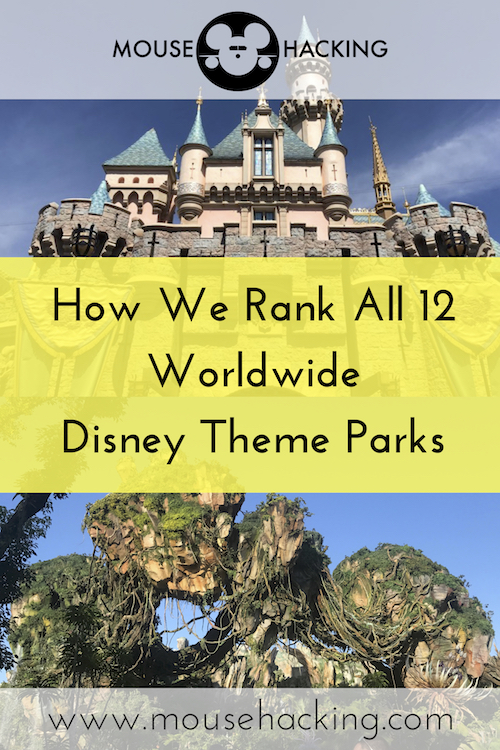
We've visited all 12 Disney theme parks in the world, here's how we rank them!
What Disney World Park Is the Biggest
Source: https://www.mousehacking.com/blog/ranking-every-disney-park
0 Response to "What Disney World Park Is the Biggest"
Post a Comment